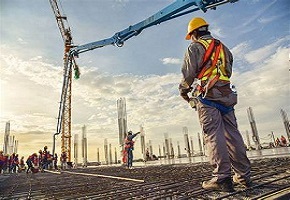
In today’s construction landscape, sustainability is not just a buzzword; it’s a guiding principle shaping every aspect of the industry. As the world grapples with environmental challenges, the construction sector is stepping up to the plate, embracing eco-friendly practices to reduce its carbon footprint and mitigate its impact on the planet. At the forefront of this movement are estimators, whose role in shaping project costs and parameters is pivotal. In this article, we delve into how estimators are adjusting their approaches to align with the ethos of green construction.
One of the primary considerations for estimators in green construction is the integration of sustainable materials. Gone are the days when cost was the sole determinant in material selection. Today, estimators must meticulously account for the use of sustainable and environmentally friendly materials that minimize environmental impact without compromising structural integrity or quality.
Moreover, energy efficiency has emerged as a paramount concern in green construction. Estimators now factor in the costs associated with energy-efficient systems and designs, recognizing that investing in these technologies not only reduces operational expenses over the lifespan of the building but also contributes to a greener future by conserving resources and reducing emissions.
In the pursuit of green building, certifications play a crucial role. Estimators must consider the costs of obtaining and maintaining green building certifications such as LEED (Leadership in Energy and Environmental Design) or BREEAM (Building Research Establishment Environmental Assessment Method). While these certifications may entail upfront expenses, they signal a commitment to sustainability and often translate into long-term benefits, including enhanced marketability and lower operational costs.
Furthermore, life-cycle analysis has become integral to the estimating process in green construction. Estimators evaluate the long-term environmental and cost impacts of incorporating green features into a project, considering factors such as maintenance requirements, energy consumption, and potential savings over time. By adopting a holistic view of a building’s life cycle, estimators can make informed decisions that optimize both environmental performance and economic viability.
Additionally, regulatory compliance is non-negotiable in green construction. Estimators ensure that their estimates align with green building codes and standards mandated by local authorities. This includes adhering to guidelines for energy efficiency, waste management, and sustainable practices throughout the construction process. By staying abreast of evolving regulations and incorporating them into their estimates, estimators play a vital role in driving industry-wide adherence to environmentally responsible practices.
In conclusion, estimators are instrumental in advancing the agenda of green construction by integrating sustainable practices into their estimating processes. From selecting sustainable materials to evaluating energy efficiency and navigating green certifications and regulations, estimators wield considerable influence in shaping the environmental footprint of construction projects. By embracing these key considerations and adopting a proactive approach to green estimating, estimators not only contribute to a more sustainable built environment but also pave the way for a greener future for generations to come.
 ™
™







